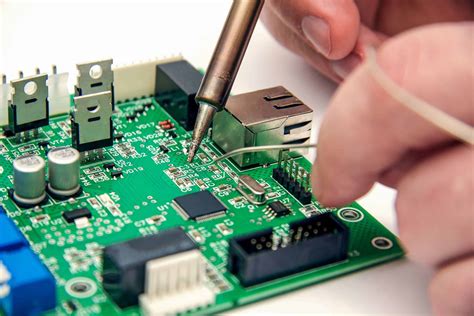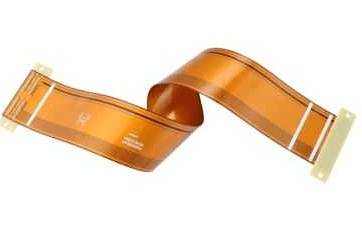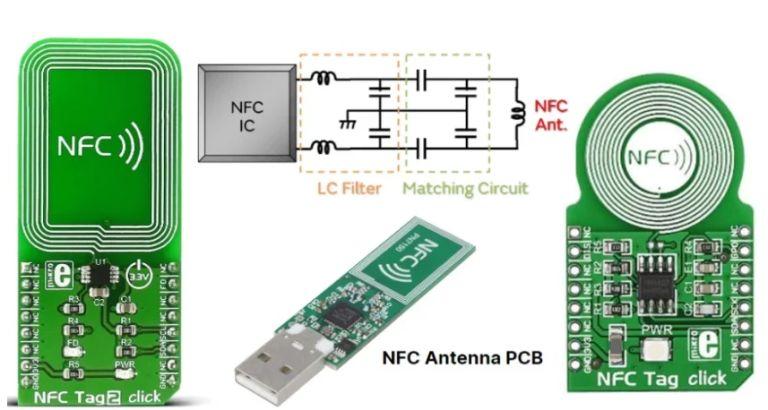Next-Gen PCB Assembly Techniques for High-Efficiency Electronics Production

Key Takeaways
Modern PCB assembly processes leverage AI-driven automation to minimize human error and accelerate production timelines. Innovations in smart soldering technologies, such as laser reflow and vapor phase soldering, ensure precise thermal management for reliable PCBA outcomes. Automated optical inspection (AOI) systems now integrate machine learning to detect micron-level defects, reducing post-production failures by up to 40%.
Tip: For manufacturers adopting next-gen PCB assembly tools, calibrating equipment to handle ultra-fine-pitch components (below 0.3mm) is critical for high-frequency applications.
The shift toward modular assembly lines enables rapid reconfiguration for mixed-batch production, cutting downtime by 25% during product changeovers. Additionally, AI-powered predictive maintenance in PCBA workflows analyzes equipment performance data to preemptively address wear, extending machinery lifespan by 15–20%. These advancements collectively optimize electronics manufacturing efficiency, ensuring scalability without compromising on zero-defect manufacturing standards.

AI Automation in PCB Assembly
The integration of AI automation in PCB assembly is revolutionizing how manufacturers achieve precision and scalability. Modern PCBA workflows now leverage machine learning algorithms to optimize component placement, solder paste application, and defect detection. For instance, AI-driven vision systems analyze thousands of solder joints per minute, identifying micro-cracks or misalignments with sub-micron accuracy—a task impractical for manual inspection. This not only reduces human error but also accelerates production cycles by 30-40%, according to industry benchmarks.
Beyond quality assurance, AI-powered predictive maintenance tools monitor equipment health in real time, minimizing downtime in PCB assembly lines. Collaborative robots (cobots) equipped with adaptive algorithms work alongside technicians, handling repetitive tasks like surface-mount device (SMD) placement while allowing human operators to focus on complex troubleshooting. Leading providers are adopting these systems to deliver high-mix, low-volume PCBA solutions without compromising speed.
Furthermore, generative AI is reshaping design-for-manufacturability (DFM) practices by simulating thermal and mechanical stresses during the assembly phase, enabling preemptive corrections. As a result, manufacturers achieve higher first-pass yields and reduce material waste—key factors in sustainable electronics production. These advancements underscore how AI automation is becoming indispensable for meeting the demands of next-generation electronics.

Smart Soldering for Reliable PCBs
Modern PCB assembly workflows increasingly rely on intelligent soldering systems to meet stringent reliability demands in compact, high-performance electronics. Unlike traditional methods, AI-powered soldering robots analyze component specifications and board layouts in real time, dynamically adjusting parameters like temperature profiles and solder paste volume. This precision minimizes thermal stress on sensitive components while ensuring optimal intermetallic bonding in PCBA joints.
Advanced systems now incorporate laser-assisted soldering for micron-level accuracy in high-density interconnects, particularly valuable for miniaturized IoT devices and aerospace-grade assemblies. Closed-loop quality verification via 3D solder joint inspection scans each connection against predefined tolerances, flagging defects like void formation or cold joints before boards proceed to testing phases. Manufacturers report up to 40% reductions in rework rates when integrating these smart systems into their PCB assembly lines.
The shift toward lead-free solder alloys further underscores the need for adaptive soldering technologies. Smart controllers automatically compensate for varying melting points and wetting characteristics, maintaining process consistency across mixed-material PCBA batches. As thermal management becomes critical in power electronics, these systems also optimize heat dissipation pathways through gradient soldering patterns, enhancing both manufacturing yield and product longevity.

Boosting PCB Production Speed
Modern PCB assembly workflows leverage high-speed pick-and-place systems to accelerate component placement, reducing cycle times by up to 40% compared to traditional methods. By integrating inline inspection systems with real-time feedback loops, manufacturers can identify placement errors instantaneously, minimizing rework and downtime. Advanced PCBA lines now utilize dual-lane conveyor systems, enabling parallel processing of boards without compromising precision. For instance, modular soldering stations paired with optimized thermal profiles ensure rapid yet consistent joint formation, critical for high-volume output.
Additionally, dynamic scheduling algorithms synchronize material flow across assembly stages, eliminating bottlenecks in multi-layer PCB production. The adoption of predictive maintenance tools further enhances uptime by preemptively addressing equipment wear. These innovations collectively shorten lead times while maintaining adherence to stringent quality benchmarks—a necessity for industries demanding rapid prototyping and mass-scale electronics delivery. As automation permeates PCB assembly ecosystems, the focus shifts to balancing speed with adaptability, ensuring systems can pivot seamlessly between diverse product configurations.

Next-Gen PCB Quality Control
Modern advancements in PCB assembly are revolutionizing quality assurance protocols, ensuring higher reliability in electronics manufacturing. Leveraging AI-driven inspection systems, manufacturers now deploy machine learning algorithms to detect micro-scale defects—such as solder bridging or component misalignment—with precision exceeding human capability. These systems analyze thousands of PCBA units per hour, cross-referencing data against historical patterns to predict potential failure points before final testing.
A critical innovation lies in automated optical inspection (AOI) paired with 3D X-ray imaging, which scrutinizes hidden connections in multi-layer boards. For example:
| Inspection Metric | Traditional Methods | Next-Gen Solutions |
|---|---|---|
| Defect Detection Rate | 85-90% | 99.2-99.8% |
| Throughput (Units/Hour) | 200-300 | 800-1,200 |
| False Positive Rate | 5-7% | <1% |
Additionally, real-time analytics integrated into PCB assembly lines enable instant feedback loops, adjusting parameters like solder paste volume or reflow oven temperatures dynamically. This minimizes rework and reduces material waste, aligning with sustainability goals. For PCBA production, IoT-enabled traceability systems now log every component’s origin and test results, ensuring compliance with aerospace and medical-grade standards.
By merging AI with advanced sensor technologies, next-gen quality control not only accelerates PCB assembly cycles but also elevates end-product durability, meeting the escalating demands of 5G, IoT, and automotive industries. Transitioning seamlessly from automated manufacturing phases, these systems ensure continuity in high-volume production without compromising precision.

Automated PCB Manufacturing Systems
Modern PCB assembly workflows increasingly rely on robotic automation to achieve precision at scale. Automated manufacturing systems integrate high-speed pick-and-place robots, laser-aligned component feeders, and vision-guided inspection modules to streamline PCBA processes. These systems reduce human error by over 60% while maintaining placement accuracies within ±25 microns, critical for densely packed boards in IoT and automotive applications.
Advanced conveyor systems synchronize with reflow ovens and automated optical inspection (AOI) units, enabling seamless transitions between soldering, testing, and quality checks. For instance, dual-lane assembly lines now process 15,000 components per hour, slashing production cycles by 40% compared to semi-automated setups. Manufacturers also leverage adaptive programming to switch between board designs without downtime, a key advantage for high-mix, low-volume orders.
The integration of PCB assembly data analytics further optimizes material utilization, with AI-driven predictive maintenance minimizing equipment failures. As factories adopt modular architectures, PCBA systems increasingly interface with enterprise resource planning (ERP) platforms, enabling real-time adjustments to inventory and workflow priorities. This evolution positions automated systems as the backbone of agile, demand-responsive electronics manufacturing.
Precision PCB Assembly Methods
Modern PCB assembly processes demand micron-level accuracy to meet the evolving requirements of high-density electronics. Precision begins with advanced surface-mount technology (SMT), where components as small as 01005 packages (0.4 mm x 0.2 mm) are placed with tolerances under 10µm. Automated pick-and-place systems equipped with vision alignment ensure PCBA consistency, minimizing errors like tombstoning or misalignment. For critical applications, laser-assisted soldering achieves sub-millisecond thermal control, reducing heat stress on sensitive ICs while maintaining joint integrity.
To enhance yield rates, manufacturers now integrate 3D solder paste inspection (SPI) systems, which map paste volume and height variations before reflow. This preemptive quality layer works in tandem with AI-driven optical inspection (AOI), flagging defects such as insufficient solder or bridging with 99.98% accuracy. Additionally, hybrid assembly lines combine rigid-flex PCB assembly techniques with robotic automation, enabling seamless transitions between through-hole and SMT workflows. Such methodologies not only accelerate production but also ensure reliability in aerospace, medical devices, and IoT ecosystems where zero-defect standards are non-negotiable.
Optimizing PCB Assembly Tech
Modern advancements in PCB assembly are revolutionizing how manufacturers achieve precision and scalability. By integrating automated optical inspection (AOI) systems with AI algorithms, defects in PCBA are detected at micron-level accuracy, reducing rework rates by up to 40%. Additionally, adaptive soldering technologies leverage real-time thermal profiling to maintain consistency across high-density boards, critical for applications like IoT devices and automotive electronics.
A key innovation lies in dynamic pick-and-place systems, which adjust component placement speeds based on design complexity, slashing cycle times without compromising alignment precision. For instance, leading providers now deploy modular assembly lines that seamlessly switch between prototypes and mass production, optimizing resource utilization.
Furthermore, closed-loop feedback mechanisms in PCB assembly workflows enable continuous calibration of solder paste deposition and curing parameters. This ensures uniform electrical performance, even under fluctuating environmental conditions. Such optimizations not only accelerate PCBA throughput but also enhance long-term reliability—a critical factor for industries demanding zero-defect outputs, such as aerospace and medical technology.
AI Innovations in PCB Manufacturing
The integration of artificial intelligence (AI) into PCB assembly is revolutionizing how manufacturers achieve precision and scalability. By leveraging machine learning algorithms, PCBA processes now enable real-time defect detection, reducing error rates by up to 40% compared to traditional methods. For instance, AI-powered optical inspection systems analyze solder joint quality and component placement at micro-scale resolutions, ensuring compliance with stringent industry standards.
Beyond inspection, AI optimizes material usage and workflow efficiency. Adaptive systems predict equipment maintenance needs, minimizing downtime, while neural networks streamline design-for-manufacturing (DFM) adjustments. Companies like RPC Electronics utilize these innovations to accelerate prototyping cycles, delivering high-efficiency electronics production without compromising reliability.
Moreover, AI-driven process control adapts dynamically to variations in environmental conditions or component tolerances, a critical advantage for complex multi-layer PCB assemblies. This synergy between AI and PCB assembly not only enhances yield rates but also paves the way for fully autonomous smart factories, where self-optimizing systems redefine the boundaries of modern electronics manufacturing.
Conclusion
The evolution of PCB assembly technologies underscores a transformative shift in electronics manufacturing, where precision, speed, and reliability converge to meet escalating industry demands. By integrating AI-driven automation and advanced soldering techniques, modern PCBA workflows now achieve unprecedented consistency in high-volume production while minimizing human error. These innovations not only accelerate PCB production cycles but also enhance defect detection through real-time analytics, ensuring compliance with stringent quality benchmarks.
Manufacturers leveraging automated PCB assembly systems report measurable gains in throughput and cost-efficiency, particularly when deploying adaptive process controls for complex, multi-layered designs. As the industry pivots toward IoT and miniaturized electronics, the role of PCBA in enabling compact, high-performance devices becomes increasingly critical. Future advancements will likely focus on refining energy-efficient manufacturing practices and expanding machine learning applications to predict component failures before assembly. This forward momentum solidifies PCB assembly as the backbone of next-generation electronics, where technical ingenuity drives both scalability and sustainability.
FAQs
How does automation enhance precision in PCB assembly processes?
Automated systems integrate AI-driven optical inspection and robotic placement to achieve micron-level accuracy. These technologies minimize human error, particularly in high-volume PCBA production, ensuring consistent solder joint quality and component alignment.
What role does AI play in modern PCB quality control?
AI algorithms analyze real-time data from automated optical inspection (AOI) systems to detect defects like soldering voids or misaligned components. Machine learning models continuously improve defect recognition rates, reducing false positives by up to 40% compared to manual inspections.
Are advanced soldering techniques compatible with legacy PCB assembly equipment?
While newer reflow soldering systems with closed-loop thermal profiling offer superior results, hybrid workflows allow retrofitting older machines with IoT sensors. This enables real-time temperature monitoring, bridging compatibility gaps in mixed-vintage production lines.
How do next-gen PCBA methods accelerate prototyping cycles?
Modular automated manufacturing systems enable rapid reconfiguration for small-batch runs. Combined with AI-optimized component placement algorithms, this reduces setup times by 60–75%, making iterative prototyping economically viable even for complex designs.
Explore Advanced PCB Assembly Solutions
For tailored insights on implementing these innovations in your production workflow, please click here to consult our PCBA engineering specialists.







